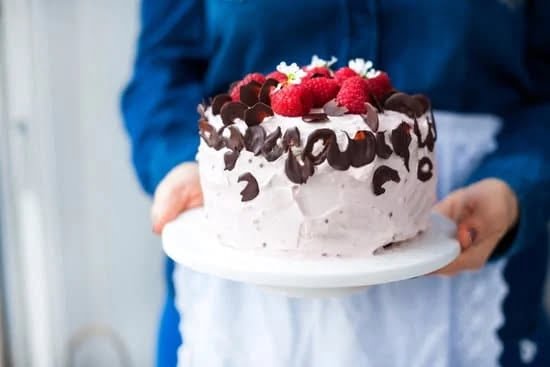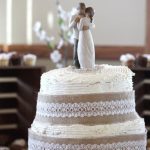Are you looking to learn how to make cake decorations with fondant icing? Fondant icing is a versatile medium that allows for endless creativity in cake decorating. It can be shaped, molded, and colored to create unique and stunning decorations for all types of cakes. In this article, we will explore the world of fondant icing and its role in the art of cake decorating.
Fondant icing, also known simply as fondant, is a type of icing that is often used to cover cakes and create decorative elements. It is made from sugar, water, and gelatin or glucose, giving it a smooth and pliable texture. Fondant icing has been a staple in the world of cake decorating for many years, with its origins dating back as far as the 16th century.
To work with fondant icing and create beautiful cake decorations, there are essential tools and ingredients that you will need. From rolling pins to shaping tools, we will discuss everything you need to get started with working with fondant icing. Additionally, we will provide tips on where to purchase these items for beginners looking to dive into the world of cake decorating with fondant.
Once you have your tools and materials ready, the next step is preparing and kneading the fondant icing. We will guide you through the process of achieving the right consistency for your fondant before creating various cake decorations. Properly kneading the fondant is essential in ensuring that your decorations turn out clean and professional-looking. Join us on this journey as we delve into the art of creating beautiful cake decorations using fondant icing.
Essential Tools and Ingredients for Making Fondant Cake Decorations
Creating beautiful cake decorations with fondant icing is a fun and creative way to add a unique touch to any dessert. However, before you can start making fondant cake decorations, it’s essential to have the right tools and ingredients on hand. Here are some of the essentials you’ll need to get started.
First and foremost, you’ll need a good quality fondant icing. This can be purchased at most baking supply stores or online. Additionally, you’ll need a rolling pin to roll out the fondant, as well as a fondant smoother to help create a smooth surface on the icing.
Other essential tools include various shaped cutters for creating different designs, as well as a fondant mat for rolling out the icing. It’s also important to have cornstarch or powdered sugar on hand to prevent the fondant from sticking to your work surface.
In terms of ingredients, you may want to consider adding tylose powder to your fondant when making decorations that need to hold their shape, such as bows or figurines. This will help the fondant firm up and keep its form once it’s been molded into shape. Furthermore, having a variety of food coloring gels on hand will allow you to add color to your fondant and create vibrant and eye-catching decorations for your cakes.
Lastly, having a small brush and some edible glue can be handy for attaching different pieces of fondant together or securing them onto the cake. With these essential tools and ingredients in your baking arsenal, you’ll be well-equipped to start creating stunning fondant cake decorations for any occasion.
| Tools | Ingredients |
|---|---|
| Rolling pin | Tylose powder |
| Fondant smoother | Food coloring gels |
| Shaped cutters | Cornstarch/powdered sugar |
Preparing and Kneading Fondant Icing
When it comes to creating beautiful cake decorations with fondant icing, the first crucial step is preparing and kneading the fondant to the right consistency. Fondant icing is a versatile sugar paste that can be rolled out and molded into various shapes, making it perfect for crafting intricate designs on cakes. To start, you will need a few essential tools and ingredients such as powdered sugar for dusting, a rolling pin, and of course, your fondant icing.
To begin preparing the fondant icing, start by lightly dusting your work surface with powdered sugar to prevent sticking. Then, take a small amount of fondant and begin kneading it with your hands. It’s important to knead the fondant until it becomes soft, pliable, and smooth in texture. If the fondant feels too dry or stiff, you can add a tiny bit of vegetable shortening or glycerin to help moisten it.
Once the fondant has reached the right consistency, you can begin rolling it out to create your desired cake decorations. Whether you’re making simple shapes like circles or more intricate designs like flowers and figurines, properly kneaded fondant will ensure that your decorations hold their shape and look professional. Mastering the art of preparing and kneading fondant icing is essential for anyone looking to elevate their cake decorating skills.
| Tool/Ingredient | Use |
|---|---|
| Powdered Sugar | Dusting work surface to prevent sticking |
| Rolling Pin | For rolling out the fondant to desired thickness |
| Fondant Icing | Main ingredient for creating cake decorations |
Making Basic Fondant Shapes and Designs
Creating Basic Fondant Shapes
When it comes to making cake decorations with fondant icing, learning how to create basic shapes is a fundamental skill. One of the most popular shapes to make with fondant is the rose, which adds a beautiful and elegant touch to any cake.
To create a fondant rose, start by rolling out small balls of fondant for the petals and shaping them into teardrop shapes. Then, carefully layer the petals one by one, gradually overlapping them to create a realistic-looking rose.
Designing Fondant Bows and Leaves
In addition to roses, being able to craft fondant bows and leaves opens up even more design possibilities for cake decorations. For making a fondant bow, roll out a strip of fondant and shape it into loops before securing the center with another piece of fondant. As for creating leaves from fondant, simply roll out green-tinted fondant and use a leaf-shaped cutter or knife to achieve the desired leaf shape.
Techniques for Achieving Professional-Looking Decorations
To ensure that your basic fondant shapes and designs look polished and professional, practice is key. Pay attention to details such as smooth edges, uniform sizes, and careful assembly when creating your decorations. It can also be helpful to use cornstarch or powdered sugar when rolling out fondant to prevent sticking and maintain its elasticity. With consistent practice and attention to detail, you’ll soon be able to produce beautiful fondant cake decorations that are sure to impress.
Learning how to make cake decorations with fondant icing may seem daunting at first, but with patience and practice, anyone can master the art of working with this versatile medium. By mastering basic shapes like roses, bows, and leaves using these techniques mentioned above, you’ll be well on your way to creating stunning cakes adorned with flawless fondant decorations.
Coloring and Flavoring Fondant
Tips for Adding Color to Fondant
Adding color to fondant icing is a great way to bring creativity and vibrancy to cake decorations. When choosing food coloring for fondant, it’s important to select gel or powder-based colors, as they won’t affect the consistency of the fondant.
Start by adding small amounts of food coloring to the fondant and knead it well until the desired color is achieved. Remember that colors will deepen over time, so it’s best to add a little at a time.
Making Flavored Fondant Icing
Flavor extracts can be added to fondant to give it a delicious taste that complements the cake. When flavoring fondant, be cautious not to add too much liquid, as it can alter the texture of the fondant. A popular method is using clear extracts such as vanilla or almond, as they won’t affect the color of the fondant. To flavor your fondant, simply add a few drops of your chosen extract while kneading the icing until well incorporated.
Choosing Quality Food Coloring and Flavor Extracts
To achieve beautiful colored and flavored fondant decorations, it’s crucial to use high-quality food coloring and flavor extracts. Look for brands that are specifically designed for use with confectionery products like cakes and cupcakes. Avoid using water-based food coloring as this can make the fondant sticky and difficult to work with. Additionally, opt for clear flavor extracts instead of colored ones in order to maintain the original shade of your fondant icing.
Adding color and flavor to fondant icing opens up endless possibilities for unique cake decorations that are both visually appealing and delicious. Whether you’re creating a whimsical birthday cake or an elegant wedding masterpiece, experimenting with different colors and flavors will take your fondant decorations to new heights.
Assembling and Applying Fondant Decorations to Cakes
After successfully creating beautiful fondant decorations, the next step is to assemble and apply them to your cakes. This process requires precision and care to ensure that the decorations are secured in place without any mishaps. To begin, it’s important to have a smooth, clean surface on which to work. You can use a turntable for ease of access and smooth rotation while decorating the cake.
Once you’ve prepared your cake with a layer of buttercream or ganache, it’s time to carefully place your fondant decorations. For flat decorations such as cutouts or shapes, gently lay them onto the cake using a spatula or your hands. If you’re working with larger 3D fondant sculptures, make sure they are sufficiently supported so that they don’t collapse under their own weight.
To ensure that your fondant decorations stick to the cake properly, you can lightly brush the back of each piece with water or edible glue before placing it on the cake. Press gently to adhere the decoration to the cake’s surface. Be mindful of any air bubbles that may form underneath the fondant as you press it onto the cake – these can cause unsightly bulges and distortions in your design.
Finally, take extra care when handling delicate fondant decorations and pay attention to detail as you add them to your cake. Step back periodically to assess how your design is coming together from all angles. Making adjustments as needed will help you achieve a professional-looking finished product.
If you encounter any issues during this process, refer back to our previous section on troubleshooting common fondant decoration issues for helpful solutions. Remember that practice makes perfect when working with fondant icing, so keep experimenting and improving your skills in assembling and applying fondant decorations on cakes for stunning results.
Troubleshooting Common Fondant Decoration Issues
Working with fondant icing to create beautiful cake decorations can be an incredibly rewarding experience, but it’s not without its challenges. As you venture into the world of fondant decoration, you may encounter some common issues that can arise during the process. Here, we’ll discuss some of these problems and provide helpful solutions for troubleshooting them.
One common issue when working with fondant is air bubbles forming beneath the surface of your decorations. These unsightly pockets can ruin the smooth appearance of your fondant shapes. To avoid this problem, make sure to knead your fondant thoroughly before shaping it. You can also use a rolling pin with spacers to roll out your fondant evenly and prevent air from being trapped underneath.
Another frequent challenge is dealing with sticky or overly dry fondant. If your fondant is too sticky, try dusting your work surface with powdered sugar or cornstarch to prevent sticking. On the other hand, if your fondant is too dry and crumbly, try adding a small amount of vegetable shortening and kneading it in until the consistency improves.
In addition to these issues, cracking and tearing can also occur when manipulating fondant. This often happens when the fondant has become too dry or has been rolled out too thin. To prevent cracking, make sure to keep your work surface lightly greased and avoid overhandling the fondant as you shape it. In cases of tearing, gently press the torn edges together and smooth them out with your fingers to repair any damage.
Overall, understanding how to make cake decorations with fondant icing involves learning how to troubleshoot common issues that may arise during the process. By familiarizing yourself with these potential challenges and their solutions, you’ll be better equipped to create flawless and professional-looking fondant decorations for your cakes. With practice and patience, you’ll soon master the art of working with fondant and achieve stunning results that will impress anyone who sees your beautifully decorated cakes.
Advanced Fondant Techniques and Design Ideas
So you’ve mastered the art of making basic fondant shapes and designs, but now it’s time to take your cake decorating skills to the next level. Here are some exciting and creative ideas for advanced fondant techniques that will elevate your cake designs:
1. 3D Fondant Sculpting: Create intricate and realistic 3D sculptures using fondant icing. From animals to vehicles, the possibilities are endless when it comes to sculpting with fondant. Invest in quality sculpting tools and practice shaping the fondant into detailed figures.
2. Textured Fondant Effects: Experiment with adding texture to your fondant decorations by using embossing mats, textured rolling pins, or even lace imprints. This can create a unique and visually appealing look for your cake designs.
3. Painting on Fondant: Take your cake decorating to a new artistic level by painting directly onto fondant icing. Use edible food coloring mixed with clear alcohol or lemon extract to create beautiful watercolor effects or intricate details on your fondant decorations.
4. Mixed Media Techniques: Combine other edible media such as gum paste, isomalt sugar, or edible glitter with fondant to create stunning multidimensional designs on your cakes.
By incorporating these advanced techniques into your cake decorating repertoire, you can truly showcase your creativity and wow your friends and family with show-stopping cakes.
Remember, practice is key when it comes to mastering these advanced techniques, so don’t be afraid to experiment and push the boundaries of what you can achieve with fondant icing. With dedication and patience, you’ll be able to create impressive and professional-looking cake decorations that will leave everyone amazed at your skills in working with fondant icing.
Throughout all of these advanced techniques, remember that the right tools can make all the difference in achieving precise and polished results. Whether it’s specialized carving tools for 3D sculpting or high-quality paintbrushes for detailed painting on fondant, investing in the right equipment can greatly enhance your ability to execute these advanced design ideas.
Now that you have an array of new techniques under your belt, get ready to impress yourself – and others – with intricately designed cakes that demonstrate just how versatile fondant icing can be. The sky’s the limit when it comes to pushing boundaries in the world of cake decorating.
Conclusion and Final Tips
In conclusion, fondant icing is a fantastic tool for cake decorating due to its versatility and ability to produce stunning, professional-looking designs. By following the step-by-step guide in this article, beginners can learn how to make cake decorations with fondant icing and elevate their baking skills to the next level. From preparing and kneading the fondant to creating basic shapes and designs, the process can be both enjoyable and rewarding.
As you start your journey into the world of fondant icing and cake decorating, remember that practice makes perfect. Don’t be discouraged if your first attempts at creating fondant decorations are not flawless – it takes time to master these skills. Keep experimenting with different techniques, colors, and flavors to develop your own unique style in cake decoration.
With the right tools, ingredients, and knowledge at your disposal after reading this article, you are well-equipped to embark on an exciting adventure in cake decorating using fondant icing. So go ahead, unleash your creativity, and have fun making beautiful and delectable cake decorations that will impress friends and family alike.
Frequently Asked Questions
How Do You Decorate With Fondant for Beginners?
Decorating with fondant for beginners can be intimidating, but it’s all about practice. Start by rolling out the fondant evenly and using cookie cutters or shaping it by hand. Use a small amount of water to adhere fondant decorations to the cake.
How Far in Advance Can You Make Fondant Decorations for a Cake?
Fondant decorations can be made in advance and stored in an airtight container for several weeks. This allows you to plan and prepare for the cake decorating process without feeling rushed or stressed about making the decorations last minute.
How Do You Stick Fondant Icing to Decorations?
To stick fondant icing to decorations, moisten a small paintbrush with water or edible glue, then lightly brush the surface of the decoration where you want to attach the fondant. Press the fondant gently onto the moistened area and hold it in place until secure. This method helps prevent decorations from falling off the cake.

Welcome to our cake decorating blog! My name is Destiny Flores, and I am the proud owner of a cake decorating business named Cake Karma. Our mission is to provide delicious, beautiful cakes for all occasions. We specialize in creating custom cakes that are tailored specifically to each customer’s individual needs and tastes.





